After roughly a day of having built your Tank Setup it should be ready to house a colony of ants. Hold back on decorating it until after the ants have established themselves. This will ensure they "set up shop" and nest in the plaster setup and dont' try building little huts out of bark and stones... the fools. (I once had a colony of Aphaenogaster that decided to stack tiny stones in order to make a nest rather then move into the plaster setup, so hold off on that stuff for now.)
Also it's time to apply the Fluon or 3 in One Oil. A little bit of both goes a long way. So add a few drops to a large cotton ball or crumbled up paper towel. Coat the corners first as best you can. Then go along the top inch of the tank. If you don't...

... this can happen. Actually it's bound to happen sooner or later. An escape proof setup is one that's surrounded by a moat and locked in an air tight chamber. Even scientists have trouble with this. Thankfully ants are more than reasonable, and can easily be swayed back into the setup.
NOTE: Ants that are ill tempered and aggressive are best swayed around with something other then your hand. The same applies for ants that have painful stings.
Ants that spray formic acid were not meant for captivity and can actually die from the putrid odor of the formic acid they spray, besides you don't want that in your room either.
Now onto Adding Ants! Before we begin you should only add Colonies, not queens still working on their first batch of brood. Colonies have workers and presumably a foraging force. Loan queens are a stage behind this step.
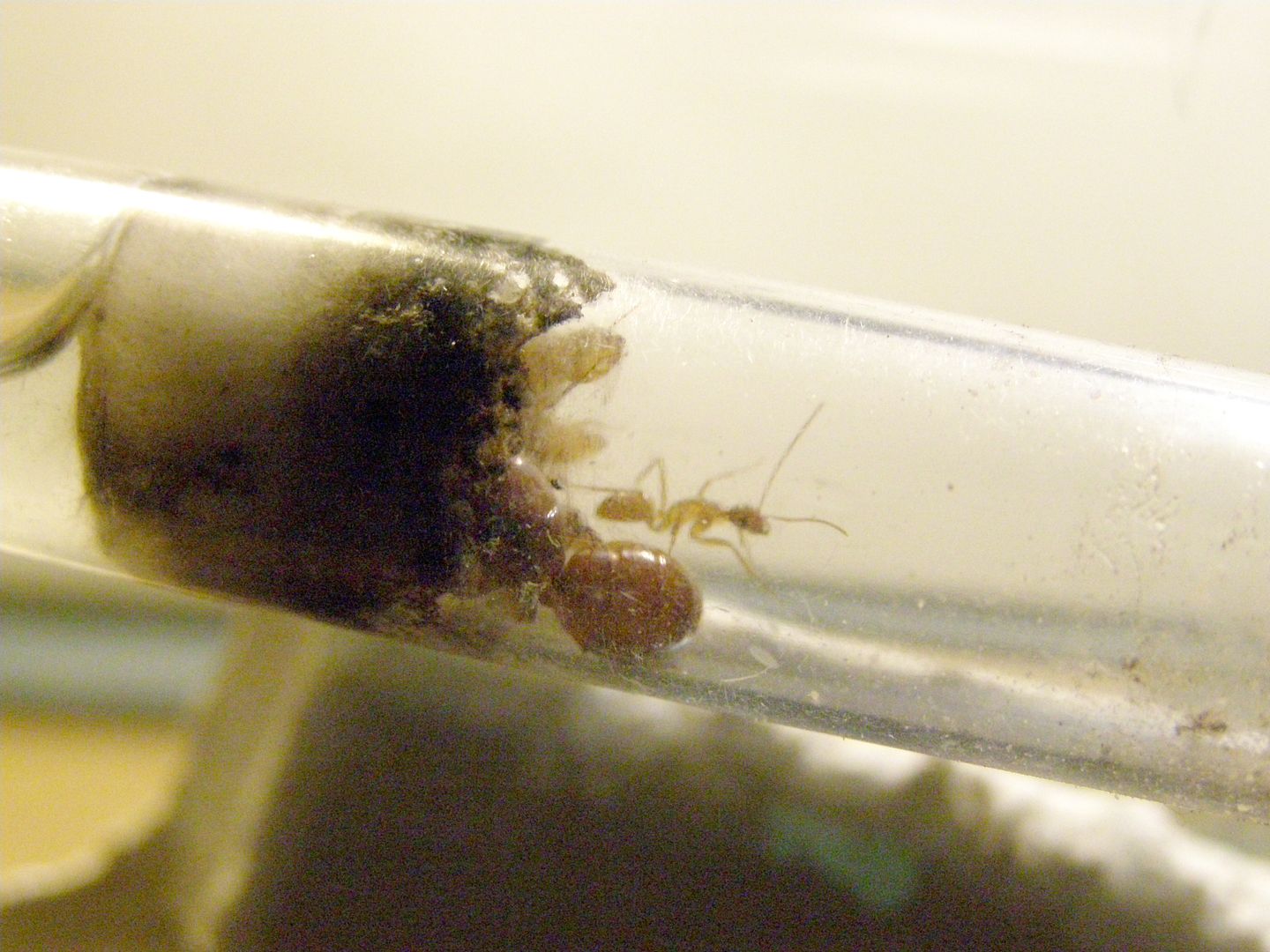
Take one colony, in this case Camponotus castaneus...
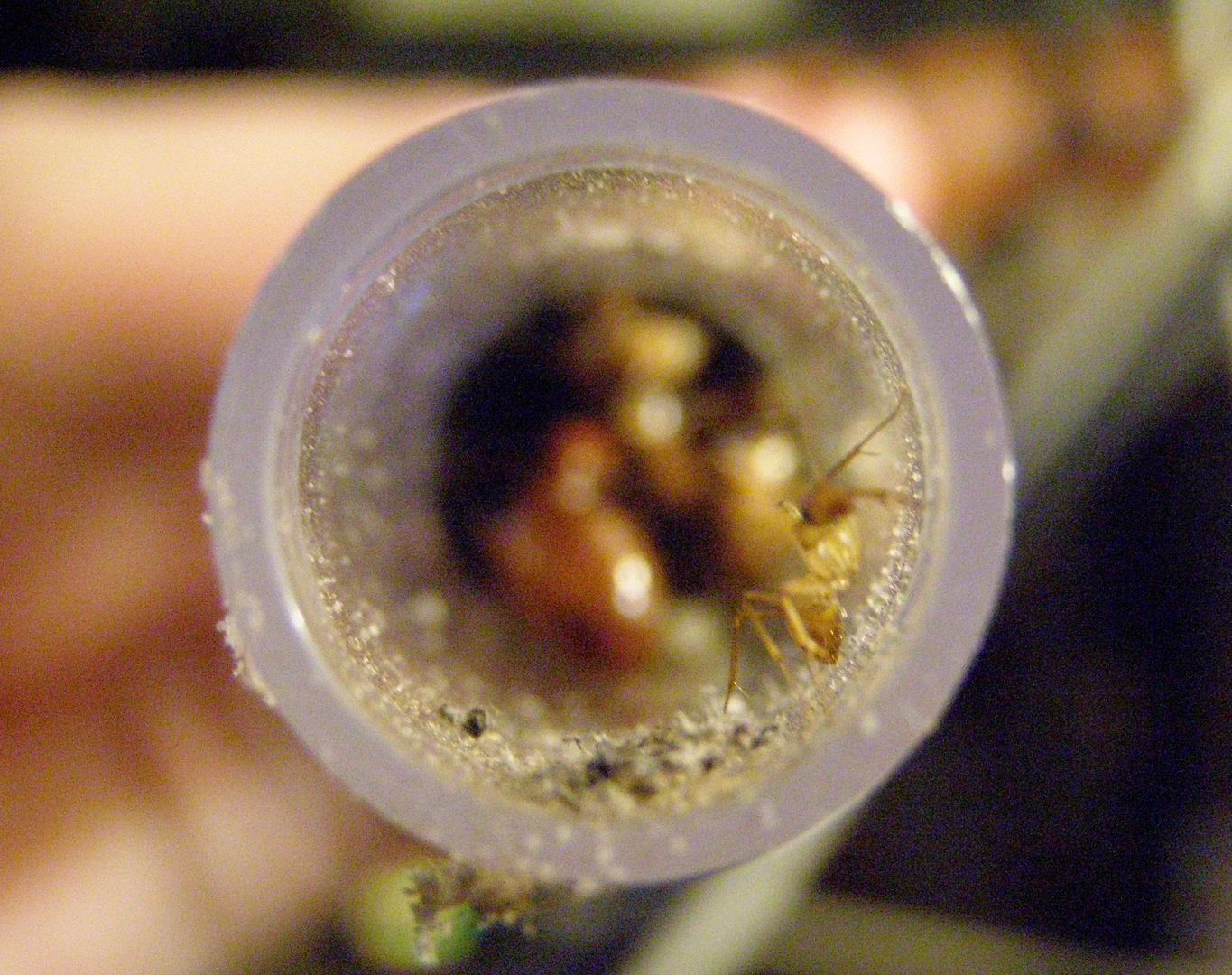
... say hello to guard ant...

... Then dump colony directly in the entrance of the setup! The end.
Well that wasn't hard at all... okay maybe I should elaborate some.
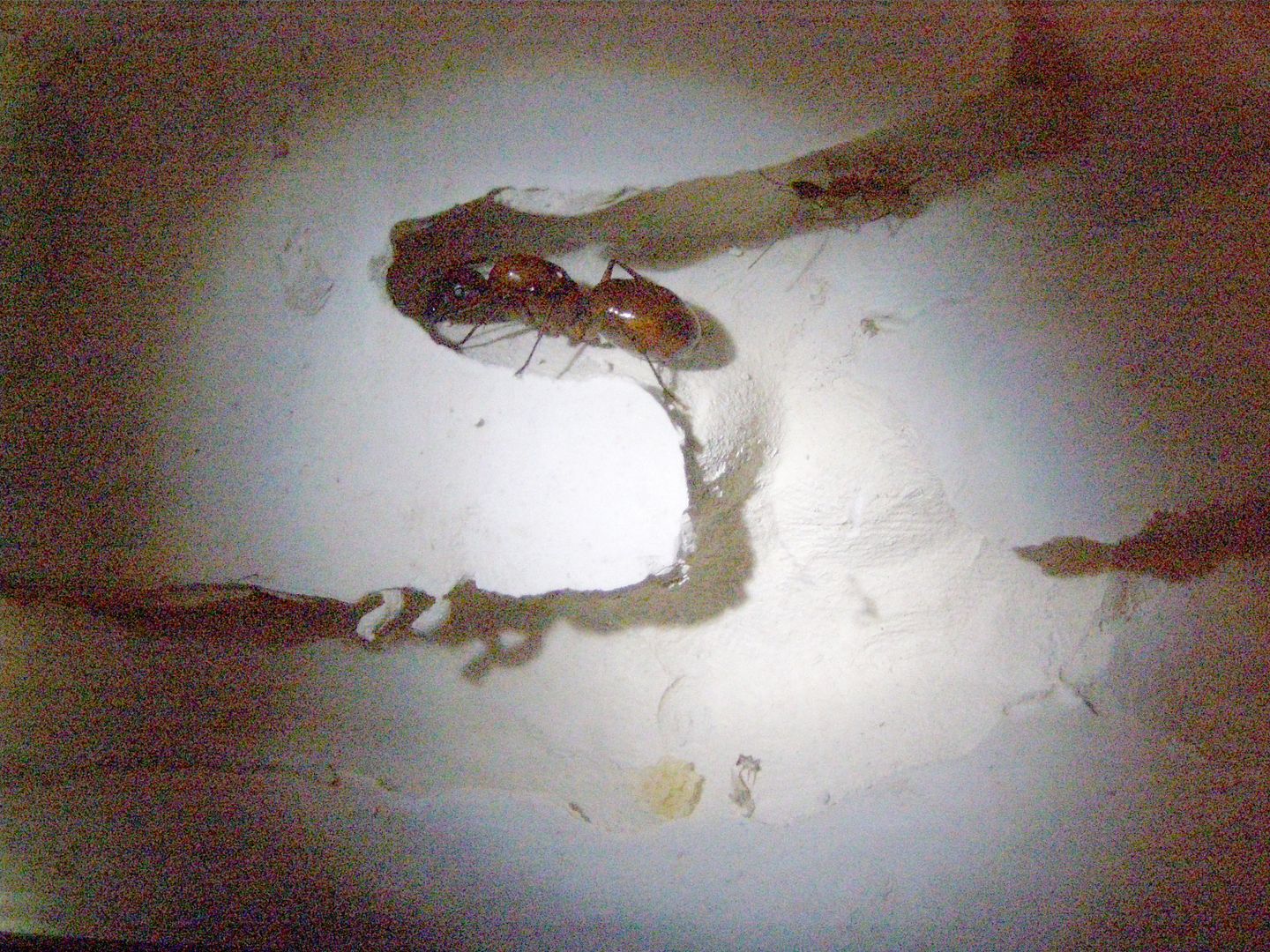
Once removed from the tube they called home since last June, the ants will scatter looking for cover. Because I dumped them right inside the plaster setup they mostly explored all the tunnels and galleries that are each ideal for a small colony to setup shop. Two things are vital though.
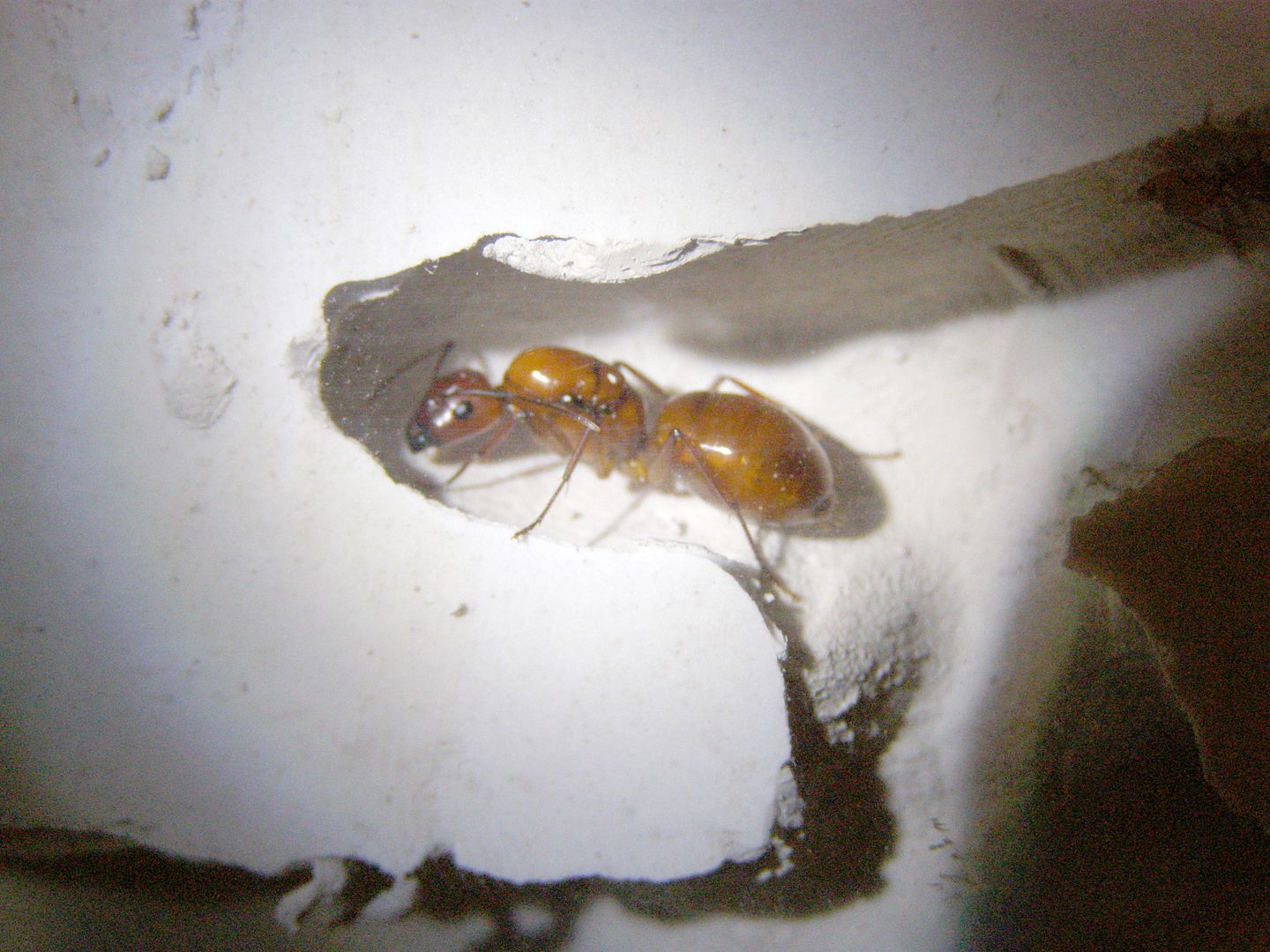
1: The Queen. While only 2 of the 9 workers actually bothered to explore outside the plaster setup, they would have been no significant lose had the queen escaped. The queen is safely doing nothing in one of the chambers. Now that I know that I can focus on getting the 2 workers that were running around back into the nesting area.
(I actually didn't apply the 3 in One Oil until after the ants were in the setup. Oops)

2: The Brood! Camponotus in general tend to lay eggs in batches. Currently they only have 2ed and 3rd instar larva in the nest. And they all fell out of the tube in one big clump. This is great! Usually what happens is some eggs are left in their old test tube setup and I end up either crushing them in an attempt to get them out. Or I have to put the test tube setup back in where the ants can find it. The issue here is their old test tube setup has the colony odor and all the ants will move right back inside the thing regardless of how bright it now is. It smells like home and that's all the ants are interested in. You really don't want either of these things to happen.
The brood is the next generation of workers. Because Camponotus lay eggs in batches this is vital to the colonies survival. When the queen's current work force dies off she's not going to bother foraging for food to build the next one. So it's important the current workers successfully rear new workers before they're die. At the same time allowing them to continue living in their test tube setup isn't good. You may as well have not built a new setup at all.
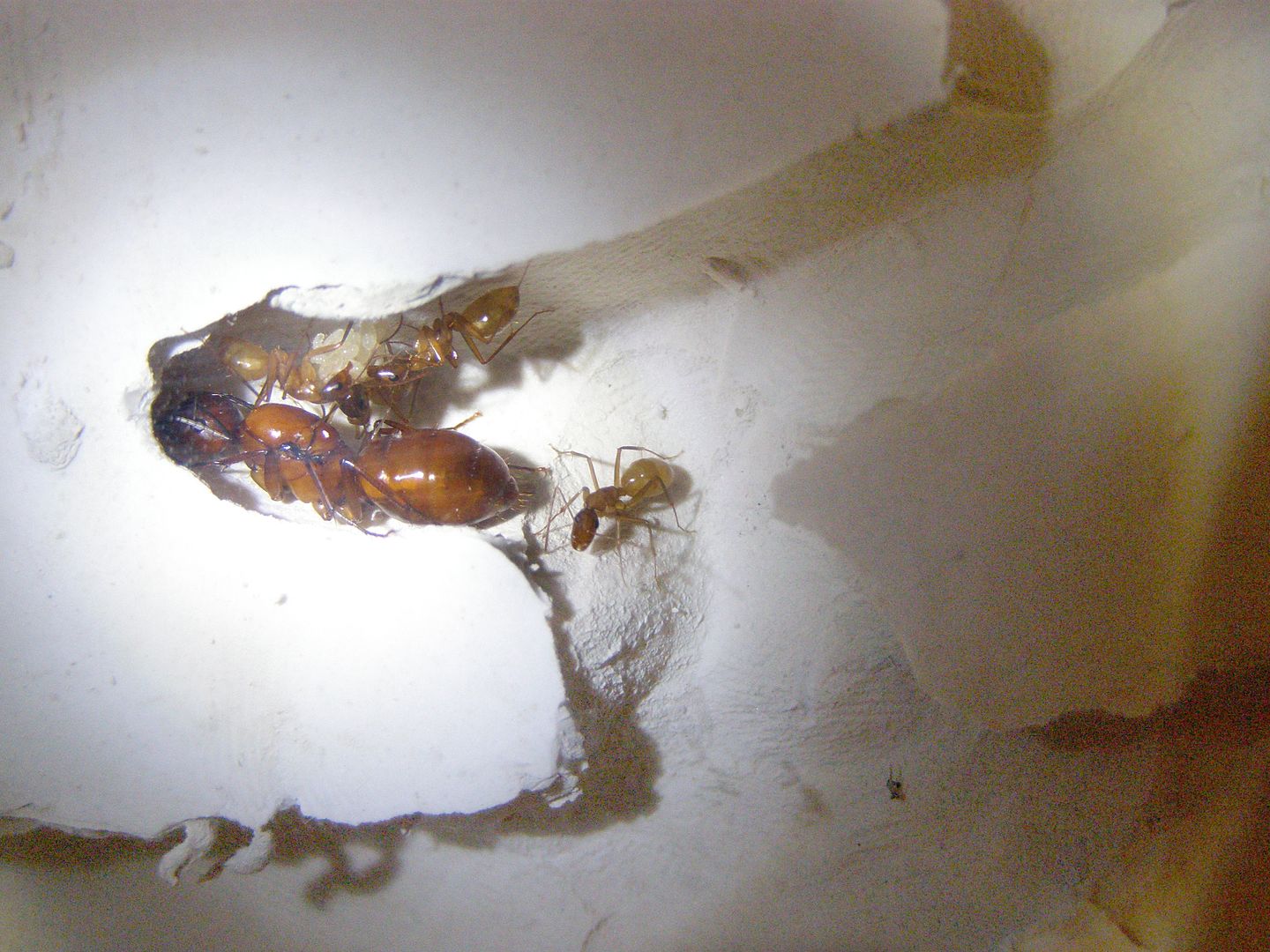
Just hours after the colony has been dumped they've already found a temporary nesting site. Right now the queen is the closest thing the workers have to a colony odor so they all tend to cluster around her and places that she's been to.
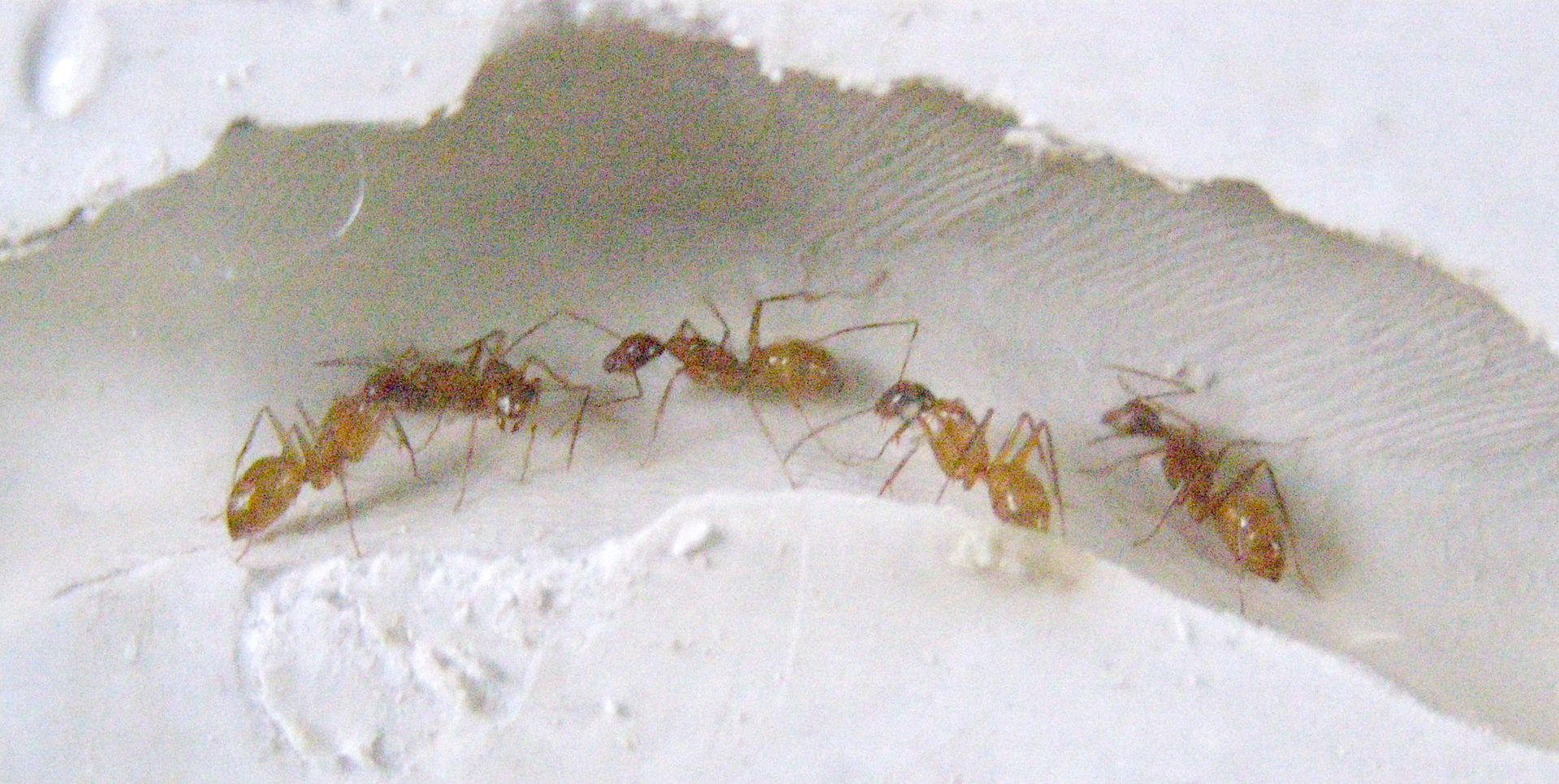
You may notice small groups of workers hanging our randomly too. They eventually disband and rejoin the group that has the queen.

You may see some ants carrying other ants, or in the case of the queen, dragging her. This is a worker that has found a chamber she thinks will be a great nest site. The trouble is convincing the colony. One by one she grabbed each of the workers and brought them to this chamber. The trouble is they disagreed with her and simply left after being let go. A noble effort but the colony said no. Had they liked the new space then the workers she brought here would have joined in the effort to bring the colony here.
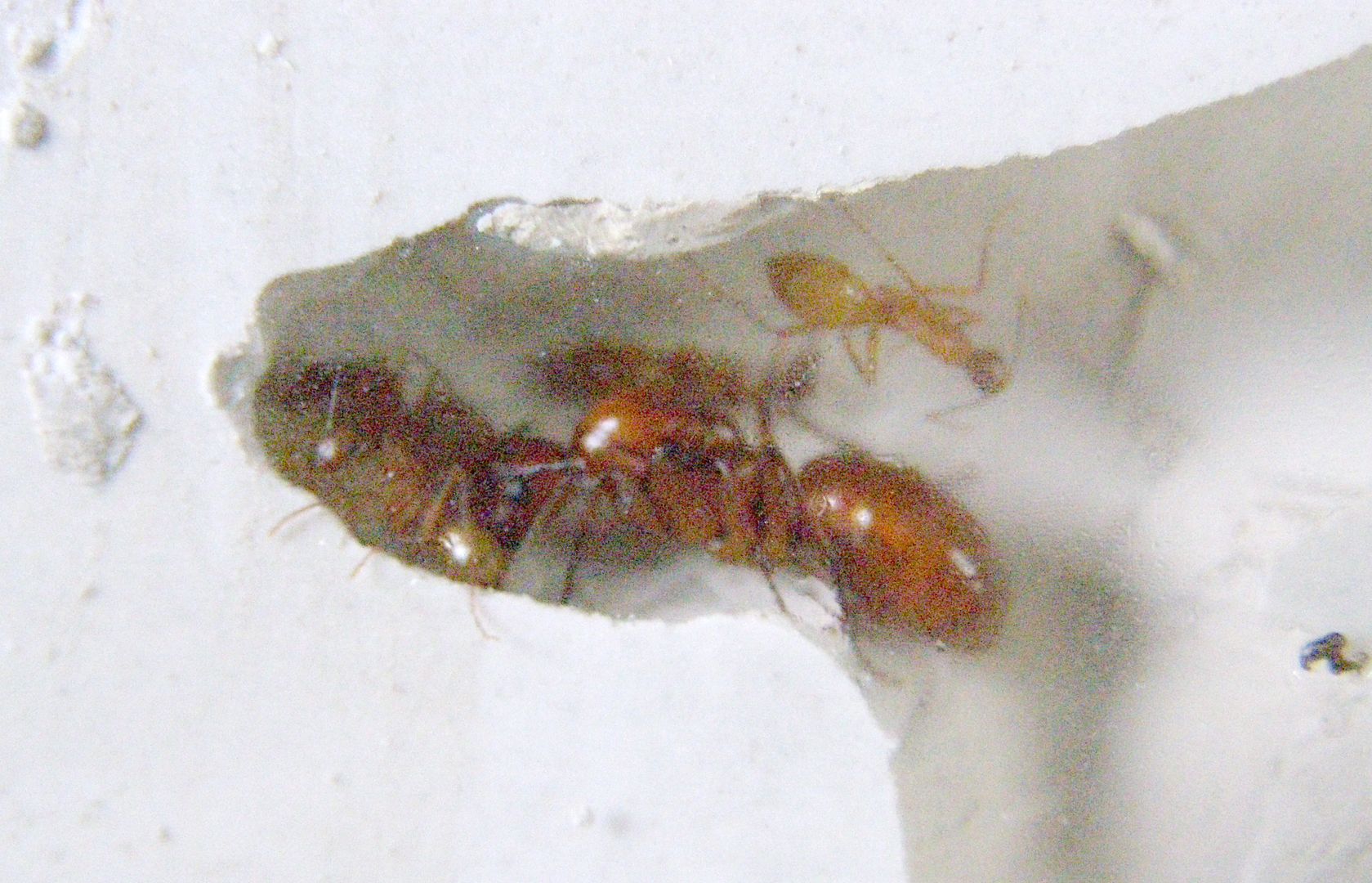
Back to their stoop they went. To be honest though I wish they had gone to that chamber instead, but what do I know.

For the first few days don't bother feeding the ants. Stuffing your face when the family tree has been chopped down is considered poor form among ants. Foraging simply isn't done until they have established a nesting site to take the food.

The following day: Condensation can be an issue in plaster setup. It is easily controlled by opening the lid to the setup, but may take time. The temperature of the glass and the plaster, having the light on or off, and how much moisture is in the plaster are all factors. It's not a problem for ants of their size but smaller species can have issues with it sometimes.

Still in the second day the ants begin making edits to the room they've choses to take over. Here an ant gathers some modeling clay I forgot to remove. When you start seeing this behavior it's safe to start decorating. (I added a thing layer of Repti Bark outside to act as the floor to the setup. Feeding should be done on trays so insect corpses don't build up.)
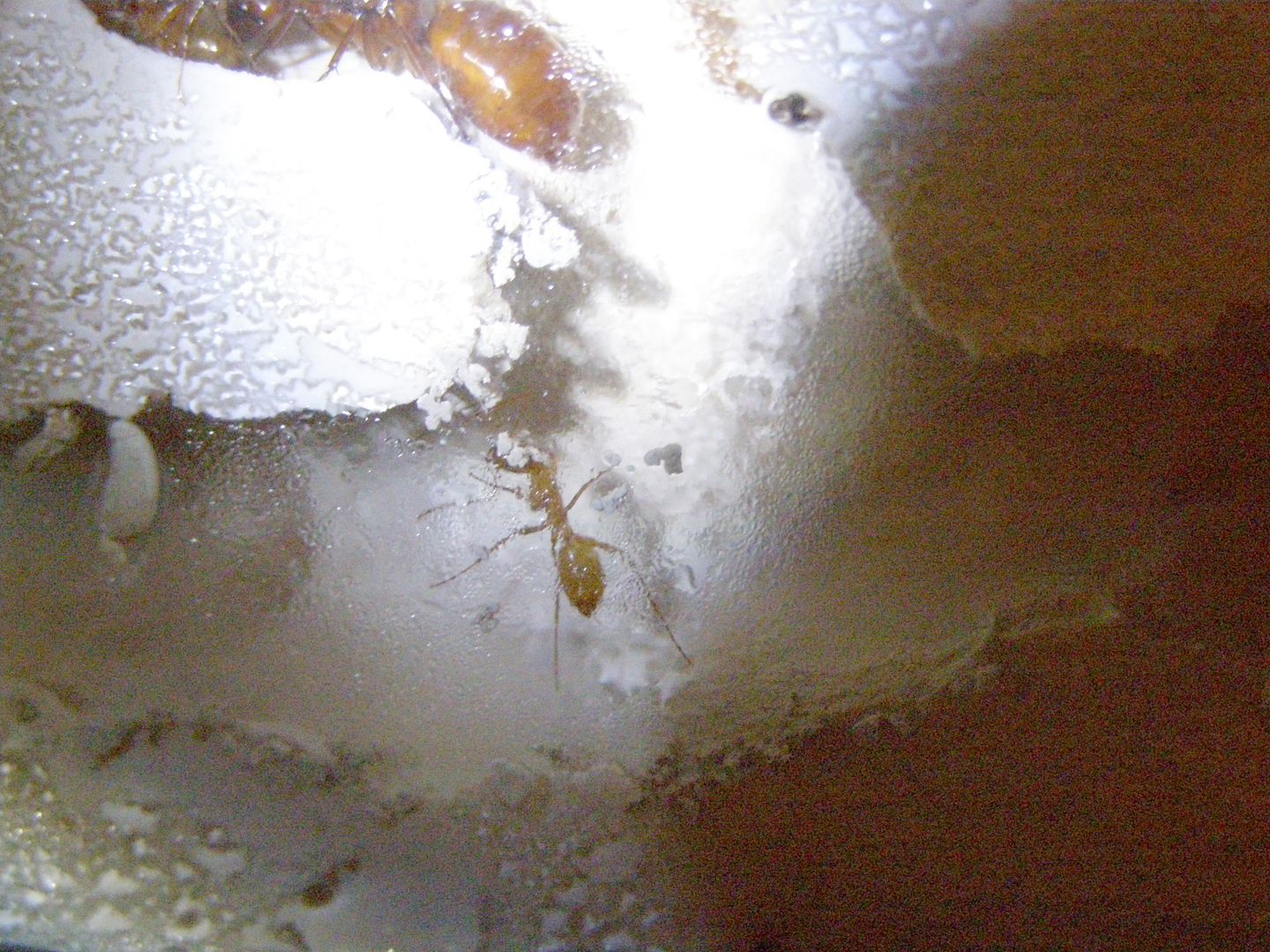
Slowly she builds out the stoop and gets the nest more floor space. Eventually (as I see today) they'll bring in the wood chips I place in as a floor medium. I love seeing ant engineering at it's finest.

The other behavior I see is scouting. I tried feeding them but she wasn't interested. I think she was trying to locate the old nest to be honest. The 3 in One Oil holds, actually she has lots of trouble just climbing the glass now, I'm not sure what that's about. When they were first introduced they had no issue with climbing glass. Before leaving the nest I notice she gives all her stored food to another worker.
And now I would like to address something. The last time I tried keeping a journal like this I had a colony of Camponotus chromaiodes. The thing is though for the longest time I had them misidentified as C. novaeboracensis. So this time I want to get it right. Unfortunately until I see a wider range of workers Color is the only thing I have to go on.
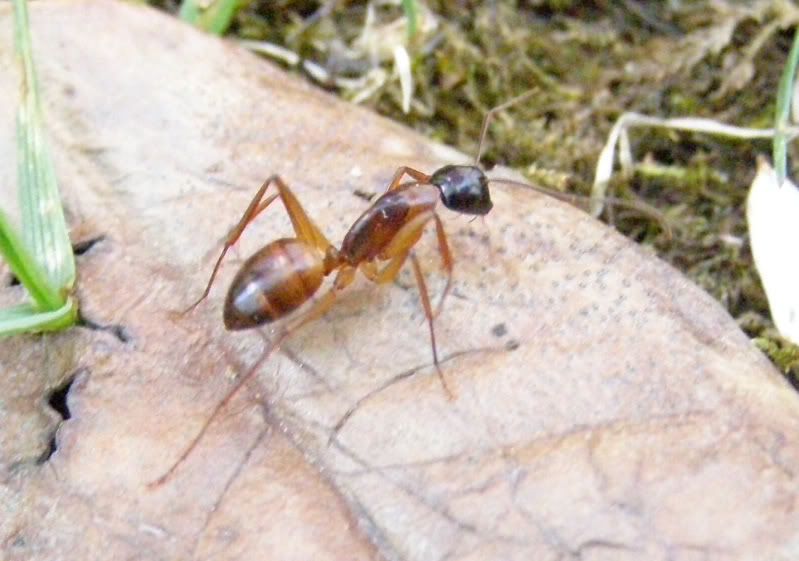
C. americanus tends to have darker traits (as seen above,) it can also be as light as C. castaneus. I don't know of any C. americanus colonies in the area though. I took this picture in Delaware, about an hour away from where I live in New Jersey.
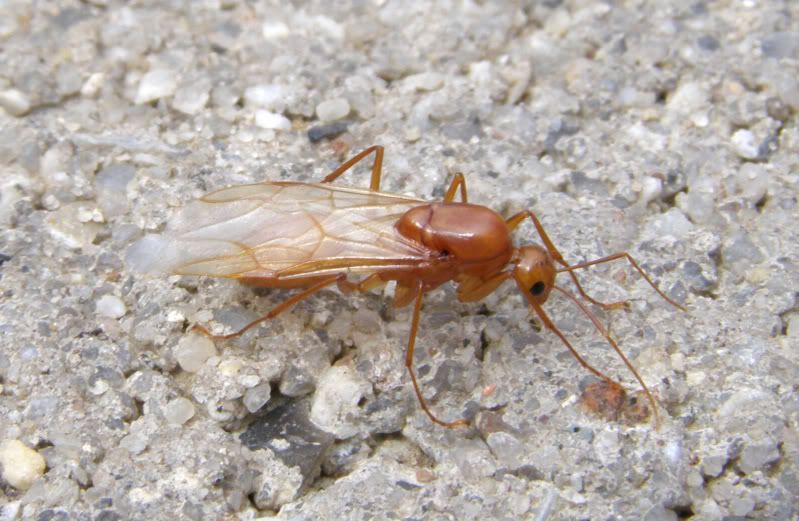
A main difference between the two species is C. castaneus has orange males, (seen above). But no males are present in the colony I have.
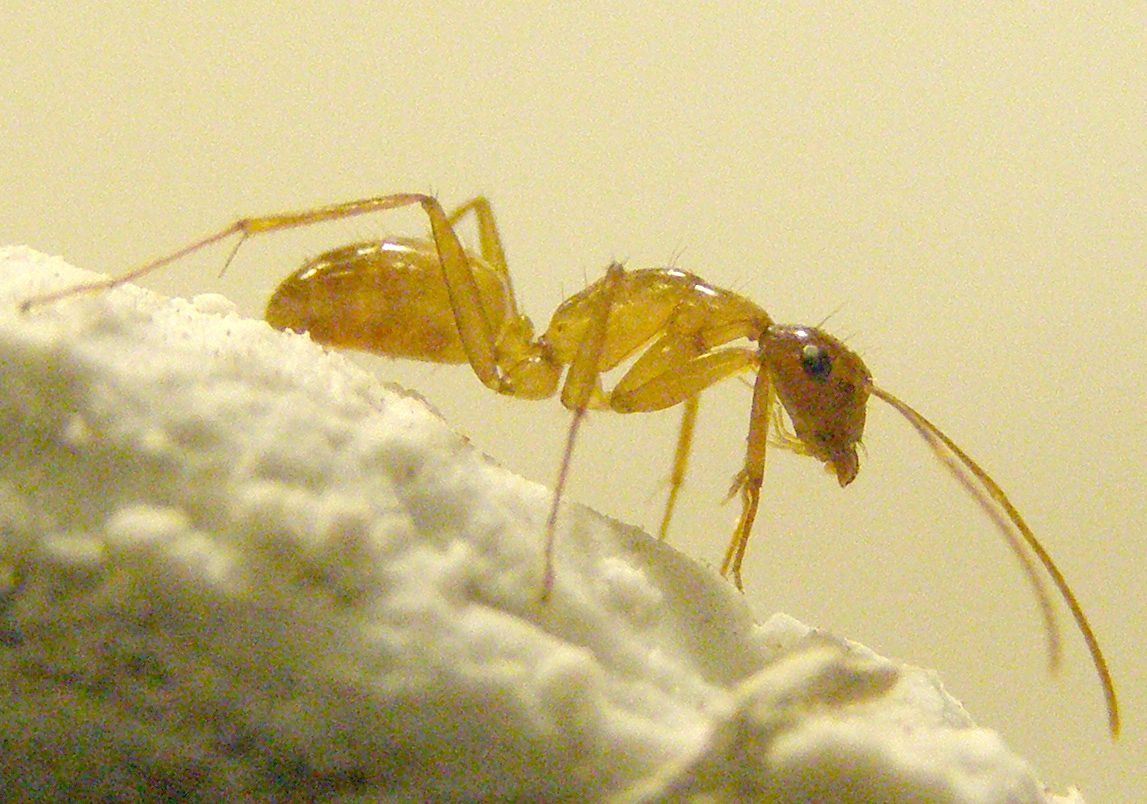
This lighter color and more brilliant oranges is more in line with Camponotus castaneus which is locally abundant. I probably have three colonies in my yard I know of and that's where I caught both queens. But as I look on Ant Web I see things like placement of hairs, length of the maxillary palp, and head shape (currently) are all similar. Actually this worker is hairy enough to be a C. americanus worker but I'm not willing to accept that yet until I start seeing some darker workers.
Even if I'm wrong a second time though C. americanus is just as pretty.